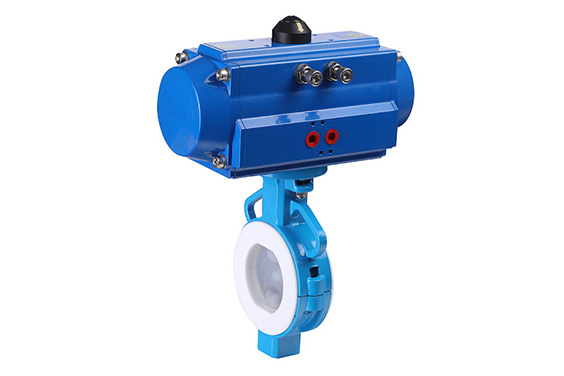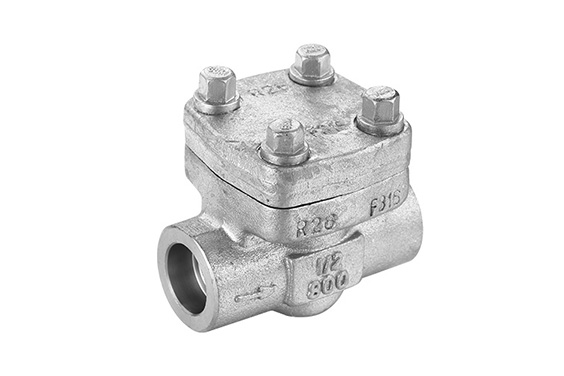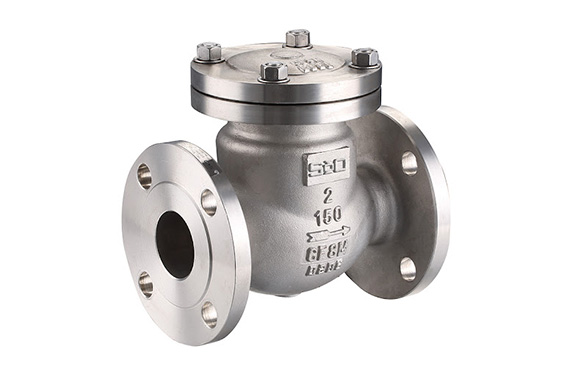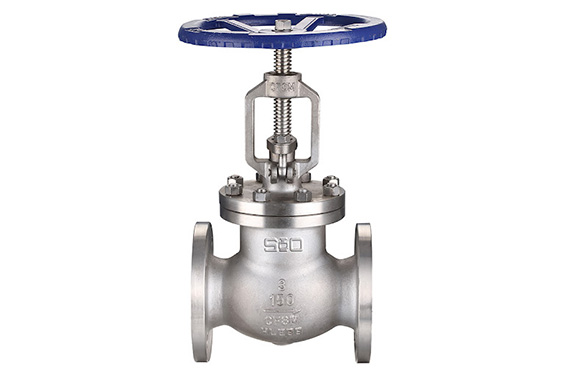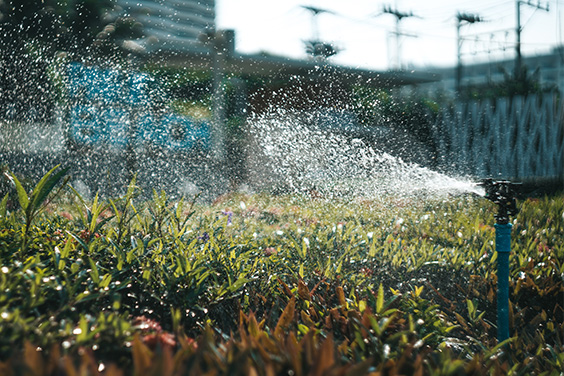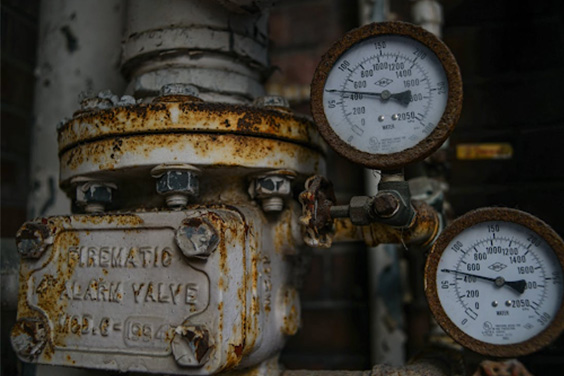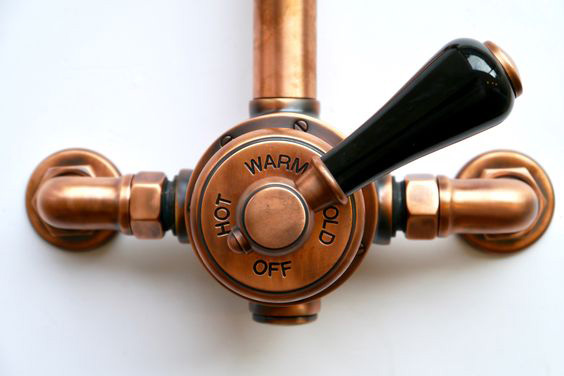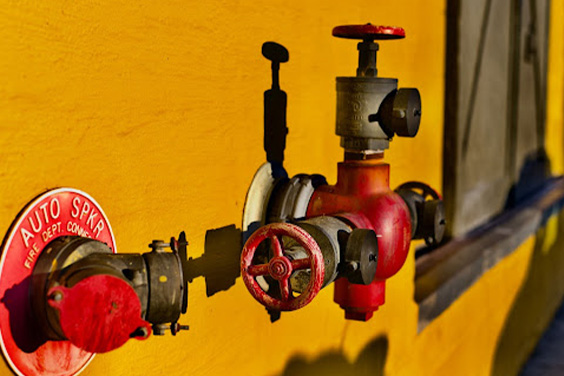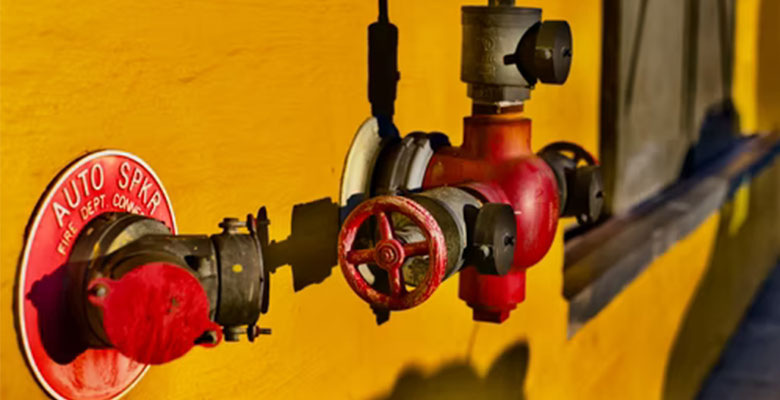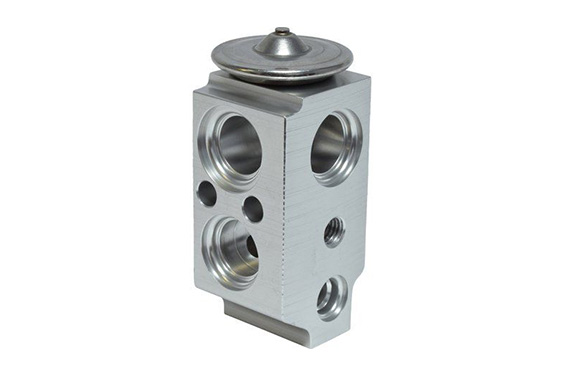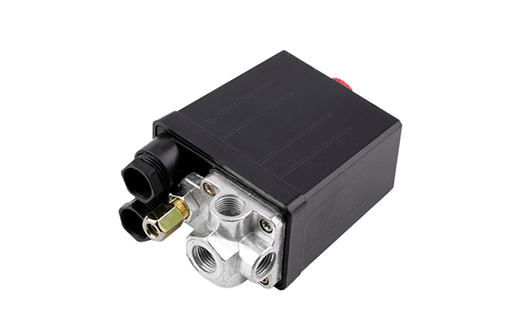A valve is, by definition, a mechanism that regulates the flow of a fluid or vapor. In industrial applications, steam control valves can regulate both pressure and temperature. There are numerous industrial applications for steam. It is used to process food, chemicals, and other products as well as to power turbines that produce electricity.
In addition to heating, cleaning, and humidification, steam is used. The main use of steam valves is to lower the incoming steam pressure for process applications. A steam valve can regulate the temperature in addition to pressure.
In today’s blog, we will talk all about the different steam valve types.
What Are Valves for Steam?
Due to its employment in steam locomotives and early industrial industries, steam is occasionally regarded as being outdated, yet it is still a viable means of transporting heat energy. There are numerous ways to create steam, many of which are thought to be environmentally friendly.
Compared to other heating techniques, using steam for process heating has many advantages. These advantages, which include the system’s simplicity, high efficiency, and dependability, make steam a popular option for contemporary process designers.
Steam is widely used at lower pressures in industrial activities. A steam valve can regulate the temperature in addition to pressure. A cutting-edge automated valve helps to maximize delivery and process efficiencies by controlling steam pressure and flow.
How Do Steam Valves Work?
One of the most fundamental and essential parts of the steam system, the steam control valve has a significant impact on the caliber of the output of the plant. Due to modern technology and current material requirements, all steam control valves should have an operating life of at least six years. Proper installation will significantly increase the life of the valve. To get the most out of the steam control valve’s functionality and lifespan, it is crucial to comprehend appropriate installation and application.
The steam control valve can be used for a variety of control functions, such as regulation, modulation, mixing, or even isolation, in addition to being utilized as a simple on/off device. Most applications call for some level of control, making steam control valves a crucial component of the procedure.
What Are The Different Types of Steam Valves?
1. Electric Steam Valves

The appliance that is used to control the flow pressure of steam and heated water vapor in various applications is the electric steam valve. An electric actuator is used to regulate the valve in the electric steam valve. The part of the apparatus that supplies the required force to move the valve for regulating fluid flow is known as an actuator.
The design of electric steam control valves is straightforward. The basic components of an actuator for an electric steam valve are a control board, a drive motor, and an adaptor. When the control board receives signals from the controller, the drive motor is excited and, depending on the signal, is forced to either open or close the valve.
Advantages:
- Automation is a benefit of electric steam valves. Steam control valves with electric actuators implies that these valves are capable of remote monitoring and control.
- The steam valve regulates temperature in addition to pressure.
- The main purpose of the steam valves is to reduce the incoming steam pressure for process applications. Because it may be utilized for a variety of tasks, including heating, cleaning, humidification, and powering turbines, steam is frequently used in industry.
Disadvantages:
- The structure is more complicated, which makes it more likely to fail.
- For on-site maintenance staff, the technological requirements are comparatively higher.
- The operation of the motor requires the production of heat; if the adjustment is made too frequently, electric steam valve is simple to overheat the motor, resulting in thermal protection, and also increasing the wear on the reducer gear.
- From the regulator’s output of a signal to the control valve’s reaction, the process is slow. It moves slowly compared to pneumatic and hydraulic actuators, taking a while to reach the desired position.
2. Pneumatic Steam valve
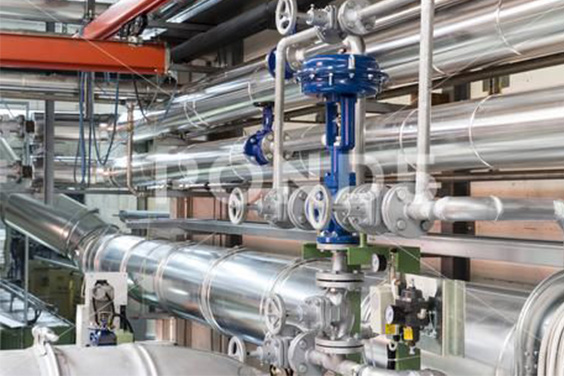
Pneumatic steam control valves are used to regulate the flow of steam in a wide range of industrial applications. Steam control valves with pneumatic actuators are used in industries like food and beverage, biotech, and petrochemical. Customers rely on pneumatic steam valves for precise, repeatable results. The pressure-balanced spool structure of the pneumatic steam control valve allows for large pressure differentials, low noise, and steady and reliable actuation.
Advantages:
- Opening and closing speeds can be adjusted without any difficulty.
- It has a simple structure, so the maintenance is simple.
- The buffer characteristic of this valve prevents jamming.
- Pneumatic steam control valves are more reliable than the electric valve.
Disadvantages:
- Pneumatic steam valves can cause a lot of noise pollution due to their design.
- Hazardous chemicals are sometimes used in the design of pneumatic systems. This can result in the unintentional release of chemicals into the atmosphere, which can be harmful to the environment.
3. Globe Valve
A rising rotating stem and handwheel are features of the carbon steel globe valve for steam and high temperatures. This type of globe valve is advised for use with steam, hydrocarbons, and other high-temperature fluids. The stem and seat of the carbon steel globe valve are constructed of stainless steel. It moves in the direction that the arrow points.
The globe valve is primarily designed for common fluids from the second group, thermic fluids cannot be used with it. Globe steam valve is also made with a rising rotating stem and handwheel. This valve’s stem needs to be kept lubricated at all times. Bolted bonnet and tightened gland packing during setting are additional features.
This globe valve for steam made of carbon steel is used to throttle flow. Instead of pushing the disc across the flow stream, as with a gate valve, shut-off is performed by doing so. Changes in the direction in the flow pattern through the carbon steel lead to greater flow resistance and a large pressure drop.
Advantages:
- Good capacity to shut off.
- Excellent to excellent throttle control.
- reduced stroke (compared to a gate valve)
- available in tee, wye, and angle configurations, all of which have their own special advantages.
- The seats are simple to machine or resurface.
- The valve can be utilized as a stop-check valve when the disc is not attached to the stem.
Disadvantages:
- increased pressure drop (compared to a gate valve)
- a larger actuator or more effort needed to seat the valve (with pressure under the seat)
- cutoff flow crosses the seat, while throttling flow is underneath.
4. Angle Valves
The pneumatically operated piston valves used in angle seat valves provide linear actuation to move the seal off its seat. As the seat is positioned at an angle, the flow is only slightly obstructed in the open position. This would produce a fantastic flow rate and a small pressure loss. The industrial angle valves are used to control the flow of harsh fluids, steam, vacuum, and gases. They can also function with high viscosity media, and extreme heat even under zero differential pressures.
These valves can also be utilized in place of solenoid valves, particularly in situations involving viscous, polluted media where conventional solenoid valves would malfunction. The single-acting or double-acting arrangement in which the angle valves are actuated affects the pressure rating. The robust design of angle seat valves makes them a popular option for demanding applications, and they offer exceptionally long cycle lifetimes. As a result, they make excellent, long-lasting substitutes for ball valves.
Advantages:
- One achieves a high flow rate with less pressure loss.
- reduction of water hammer and backflow resistance.
- has a longer lifespan than ball valves.
Disadvantages:
- The permissible differential pressure decreases with channel size since the single-seat valve construction is still present.
5. Ball Valve
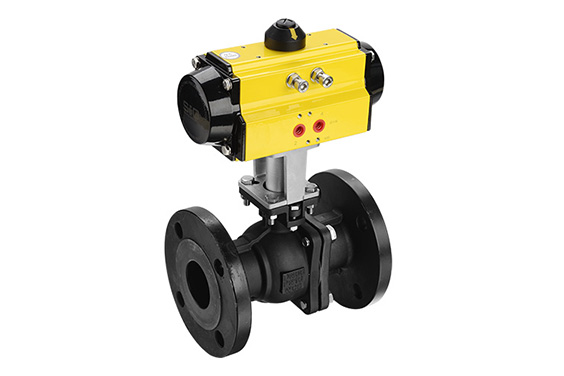
Using a rotatable ball with a bore, a ball valve controls the flow of a liquid or gas. Rotating the ball 90 degrees around its axis allows the medium to pass through or is prohibited from doing so. Steam ball valve are distinguished by a long service life and provide reliable sealing across the life span, even when the valve is not in use for an extended period of time. They are therefore more widely used as a shut-off valve than gate valves for this reason. In specific circumstances, ball valves are employed as control valves. This use is less popular due to the flow rate control’s relatively poor accuracy. The ball valve for steam does have some benefits, though.
Advantages:
- swift opening and closing.
- smaller and lighter in weight than a gate valve.
- provides service that is airtight.
- Ball valves come in a variety of designs, giving you a variety of options.
- Can be utilized for both clean and slurry purposes.
- A multi-port design offers flexibility and lowers the need for valves.
- The force needed to open the valve is less than the force needed to open a gate/globe valve.
- High-quality ball valves offer dependable operation in high-pressure and high-temperature applications.
Disadvantages:
- Not suitable for applications requiring continuous throttling.
- In slurry or other applications, the suspended particles may settle and become lodged in body cavities, leading to leakage, wear, or valve failure.
6. Butterfly Valves
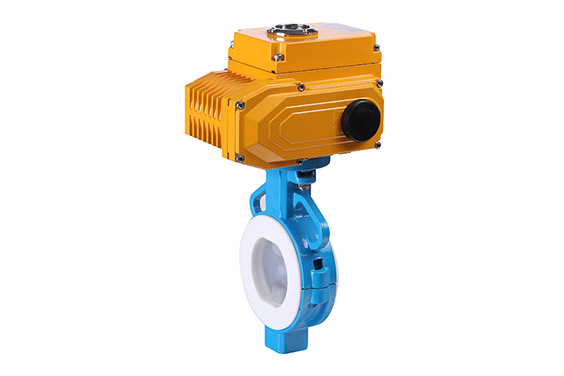
Butterfly valves and ball valves both have similar operating principles. All that the butterfly is is a disc attached to a rod. When the valve opens, the disc is moved back to admit the flow. The valve closes when the rod turns the disc by a quarter turn to a point perpendicular to the flow direction. The butterfly valves are utilized for on-off or modulating services due to their lightweight, lower costs, compact installation footprint, availability in large sizes, and speedy operation. These valves are operated by handles, gears, or mechanical actuators.
Advantages:
- Small and swiftly opening and closing when activated, butterfly valves are tiny.
- The disc is lighter than the ball valve, thus the valve needs less structural support for a similar diameter.
- The accuracy of butterfly valves makes them particularly useful in industrial settings.
- They are highly dependable and require very little maintenance.
Disadvantages:
- Even when fully open, a piece of the disc is exposed to the flow.
- The butterfly valve always causes a pressure switch across the valve, regardless of the setting.
- The thicker liquids may prevent the disc from rotating.
7. Bellow Seal Valve
One type of control valve used to balance the pressure has small construction and is called a bellow seal valve. The valve stem sealing parts of the bellow seal valves are made of bellows. To prevent the leaking of the valve stem, the valve adopts a structure with bellows or bellows and stuffing boxes in place of the stuffing boxes used for regular valves or structures. The bellow seal valve is particularly useful for pipelines of steam and explosive, flammable, and toxic media.
Due to the bellow’s characteristics of aging resistance and deformation, the bellow seal valve overcomes frequent latent faults such as aging of the stuffing box and temperature sensitivity. All of these flaws are the responsibility of the packing-sealed valve.
Advantages:
- Instead of fluid loss, the factory’s equipment is better protected.
- structures with strong seals that don’t leak.
- Long working life with minimal maintenance and running costs.
- It has a reasonable price.
- capable of accommodating both absolute and differential pressures.
- able to exert a lot of force.
- To the low-to-moderate range, it’s good.
Disadvantages:
- Ineffective at high pressures.
- requires adjusting for ambient temperature.
- Metals for building are scarcely available.
8. Gate valve
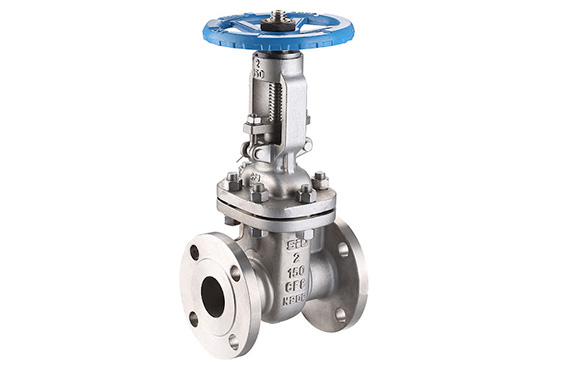
A gate valve for steam, also known as a sluice valve, is a valve that opens by lifting a barrier (gate) out of the fluid’s path. When fully opened, gate valves take up very little space along the pipe axis and barely restrict fluid flow. The gate faces can be parallel or wedge-shaped (in order to be able to apply pressure on the sealing surface).
Advantages:
- Steam Gate valve can be used in either direction of the circuit. In other words, their media flow is unobstructed in all directions of the valve body, and they are not affected by the directional flow of the medium. Thus, they are best suited for the pipeline system.
- Gate valves have a low-pressure loss due to the laminar flow they provide.
Disadvantages:
- The distance that the valve plate must travel to open or close is relatively great, resulting in a lengthy opening and closing time. Because of this disadvantage, gate valves are impractical for applications requiring rapid actuation.
9. Check valve
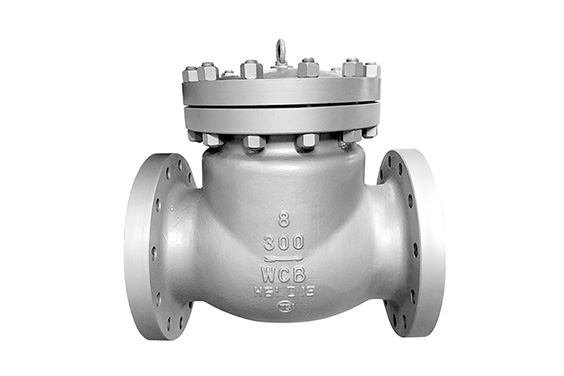
Steam check valves are two-port valves, which means they have two openings in the body, one for fluid entry and one for fluid exit. Check valves come in a variety of styles and are used in a wide range of applications. Check valves are frequently found in everyday items. Although they come in a variety of sizes and prices, check valves are typically very small, simple, and inexpensive.
Check valves operate automatically and are not controlled by a person or any external control; as a result, most do not have a valve handle or stem. Most check valves have plastic or metal bodies (external shells).
Advantages:
- There aren’t many moving parts.
- A reduced carbon footprint.
- Reduce the possibility of an unexpected valve failure.
- Adaptable to different flow conditions.
- Reduce production downtime and losses.
Disadvantages:
- A pressure spike causes water hammer when the flow of a gas or fluid is abruptly stopped and the valve closes, causing noise and vibrations. Water hammers can damage systems and necessitate costly repairs. When the flow of a gas or fluid is unexpectedly interrupted, the valve closes, resulting in loudness and vibrations.
- Reverse flow is costly and can cause a pump to spin backward, resulting in damage.
- Frequenece opening and closing of the valve can cause Jabbering. This is due to the check valve being oversized. When installing a check valve, ensure that it is the correct size for the job.
10. Cartridge / Manifold Valves
Industrial hydraulic valves also referred to as 2/2-way valves or logic elements, are employed for pressure, flow, and directional control. They may be included in hydraulic manifold systems for a wide range of mobile and industrial machinery thanks to their intricate design. Applications requiring high flow rates and leak-free control are suitable for these products.
Directional, pressure and low control valves that screw into a threaded cavity are commonly referred to as “cartridge” valves. These cartridge valves are typically rated for low flows – 40 GPM or less – despite the fact that some manufacturers have products that can flow more than 100 GPM.
Advantages:
- Size and weight are small.
- Affordable.
- efficient and resistant to leaks.
- convenient, tidy, and easily maintainable
Disadvantages:
- Cartridges that cannot be repaired.
- Logistics.
- uncommon cartridges.
- Expense.
What Are The Industrial Applications Of Steam Control Valves?
The most common medium for heat transfer in industrial process control applications is steam. In electric power plants, steam-driven turbines make extensive use of steam control valves. A wide variety of applications are available. However, numerous kinds of steam-powered control valves are used in chemical, refinery, and food processing facilities.
The following is a list of some typical uses for this valve:
- Re-boilers
- Fluid heat exchangers
- Acid baths
- Direct Steam Injection Sanitary Heater
- Combustion air pre-heaters
- Small storage calorifiers
- Water treatment plants
- Humidifiers
- Ironers
- Sterilizers
- Reactors
- Unit Heaters
Factors to Consider When Selecting Valves for Steam
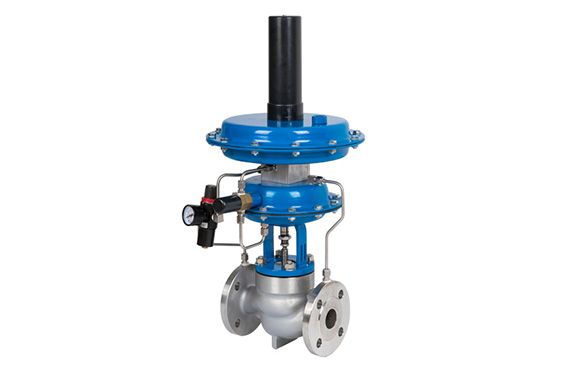
1. Media Type
The type of valve material to be used will depend on the properties of the liquid or gas being regulated. Polytetrafluoroethylene (PTFE) and perfluoroalkoxy alkanes (PFA) are excellent options for monitoring corrosive or harsh compounds because they can tolerate these circumstances. For the best level of safety when monitoring pressured gases, it’s crucial to use metal valves.
2. Valve Function
To what demand does your valve need to respond? 3-way valves can be used for on/off control, as well as for diverting or mixing media, whereas 2-way valves work well for on/off control in a system. Make a note of how frequently your valve will be opened or closed as well. Order a valve that is typically oriented in one direction and switches to the opposite direction when activated in order to increase lifespan.
3. Actuation Method
How the valve will be used must also be taken into account. Determine whether the valve will be manually turned on and off or whether it will require an actuator to turn on and off automatically. Choose whether an electric, pneumatic, or hydraulic actuator will be utilized with the unit if the latter is chosen.
4. Maintenance Requirements
Ball valves are a wonderful choice if routine maintenance is required because they are one of the easiest valve types to service and resist blockage. Ball valves can also be purchased in three-piece designs, which include a body and two end caps. This prevents the line from being shut down during maintenance because the main body portion may be readily removed for cleaning without removing the end caps from the pipe.
5. Noise
A Control Valve on high-pressure steam is a nice example of how noisy valves may occasionally be. This is unimportant if the valve is placed inside a soundproofed space, but it could be a problem if it is placed outside close to homes and other structures. It is preferable to clarify this at the design stage as it can be something that catches engineers off guard. Low noise trims are available on such valves to alleviate part of this noise.
6. Weight & Support
Because of their very nature, valves can be quite heavy. With actuators and extra controls, large bore valves can weigh more than 500 kg. When designing a system that is likely to have huge valves installed, keep in mind that this puts a lot of stress on the pipes.
Ducting and HVAC installations, where the ducting is quite lightweight, are frequent locations where this may become a problem. Your supplier should be able to provide you with a datasheet with valve weights in kilos, just like they did with valve dimensions. For actuated assemblies, they will compute a weight for you that includes the combined weight of the actuator, valve, switch boxes, and other ancillaries.
7. Temperature
A minimum prerequisite for choosing valves is temperature. Extreme temperature-sensitive valves are frequently “bespoke” rather than “off the shelf.” The materials used in construction and the valve’s ability to seal against temperature are the two key factors to take into account when it comes to temperature.
Your supplier can give you advice regarding the best body material and sealing configuration. The usage of pressure/temperature charts, which demonstrate how the temperature limitation of a valve will decrease as the pressure rises, serves as a useful point of reference in this situation. These are accessible for the majority of valve types.
8. Pressure
Always consider the pressure while choosing the valve that will work best for your application. Specialty valves are usual for high-pressure applications, and these valves often have thick wall diameters to withstand the pressure. Additionally, they have specialized sealing arrangements similar to those on Mount Ball Valves. A valve might not be the best option at all for low-pressure situations when bubble-tight shut-off is not required. This can be seen, for instance, in low-pressure air/exhaust applications where a “damper” would be more lightweight and cost-effective.
Contact Professional Steam Valve Manufacturers - SIO
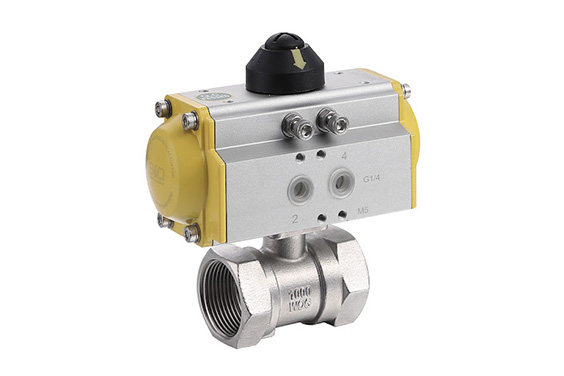
Our mission as one of the dependable steam valve manufacturers is to produce the best industrial machinery and steam valves to satisfy the various demands of our clients. The stem sealing system on SIO valves prevents leak routes and lowers fugitive emissions.
China valve supplier SIO provides specialized valves and valve actuation solutions for every industry as a top valve manufacturer in China. The steam industrial, oil and gas sector, petrochemical and chemical business, refining industry, pulp, and paper industry, power industry, and other industries use our selection of industrial valves and equipment frequently.
In order to regulate flow pressure rate and lessen noise during operations, we also provide a wide variety of valve actuation kinds. All of this will contribute to our valves operating more effectively and lasting longer. Contact SIO Valve for more information.

